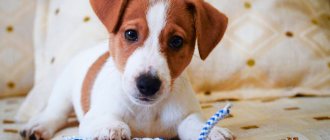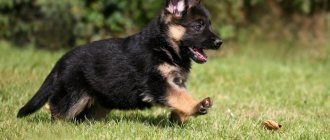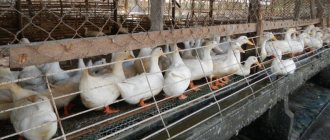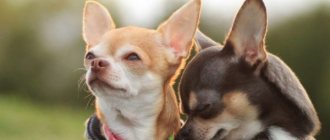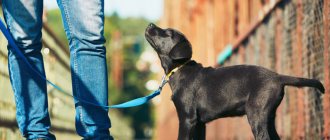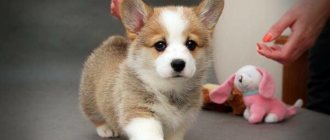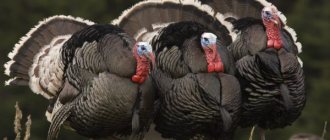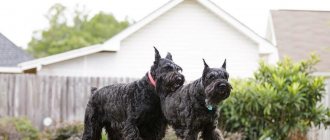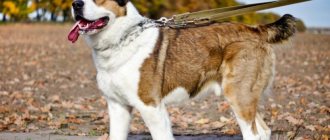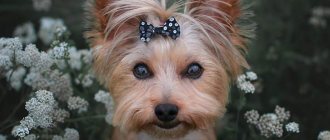At 2 months of age, your puppy is ready to leave his mother and brothers and join your family. Your focus should be on your puppy's basic needs to eat, drink, sleep, play and eliminate. Around this time, your puppy also becomes interested in everything around him, so this is the best time to start teaching your puppy everything he needs to know!
The new surroundings of your home and all the new sights and smells that come with it are a little scary for him. Reduce your puppy's stress and fear by spending plenty of time together. The more time you spend with your 2 month old puppy, the stronger your bond will be for life. Let's find out how to care for 2 month old puppies.
Keeping your puppy safe and healthy
For a 2 month old puppy, like for everyone else, the most important thing is safety and health, now we will try to give a few points that will help you with caring for a 2 month old puppy, first we’ll talk about everything related to health and safety.
Home preparation
We already said above that a puppy at 2 months is interested in everything. Your puppy will try to do things he shouldn't. Telling your puppy “no” will not be effective at this age, and you will not be able to constantly supervise your puppy. Before you bring him home, make sure your home is safe for your puppy. Some effective ways to prepare your puppy's home include :
- Place detergents and other chemical bottles on a high shelf or in a locked cabinet;
- Remove small hazards such as coins, paper clips, pins, marbles and rubber bands;
- Use baby gates to block off rooms and areas you don't want your puppy to enter.
© shutterstock
Puppy bed
Your 2 month old puppy will need a cozy place to sleep. Make sure your puppy has a bed that is large enough to fit him in now and as he grows, such as a bed measuring 1.2m by 1.2m or larger for a large dog. Place the bed in a draft-free area to keep your puppy warm in his new bed. You can also put the bed in the kennel, just be sure to measure the kennel so the bed will fit.
- If you don't want to buy a bed, then make your own with a few blankets. Stack and fold them to give your puppy a soft place to sleep.
Advice . You can place your puppy's bed in the kennel if you decide to adopt him. The kennel will also serve as a den for your puppy, which can be comforting for him. Get a kennel that is large enough for your puppy to easily stand up, lie down and turn around.
Choose chew toys for your puppy
2 month old puppies still have baby teeth. While they are losing them and growing adult teeth, they will need to chew. Make sure your puppy always has plenty of simple toys and appropriately sized bones. Let them be in every room where your puppy is allowed to be.
- If your puppy is chewing on the wrong thing, pick up her toy or bone, walk up to her and take away what she has with a stern "No" and then give your puppy the toy or bone. When he starts chewing the toy, praise him;
- If you don't give your puppy something to chew, he will find something to chew. Puppies need to chew to relieve teething pain.
© shutterstock
Vaccinations and deworming
Your 2 month old puppy will need to be vaccinated every 2 to 3 weeks until he is 4 months old, at which time he will also need deworming treatments. Call your local veterinarian and make an appointment soon after you take your puppy home.
- Good breeders start vaccinations very early, before the puppy is ready to come home with you. Ask the breeder for puppy vaccination records so you can give them to your veterinarian. If you are adopting a puppy from a shelter, early vaccinations should also be taken care of, but be sure to ask!
- Puppies are often born with worms and may need to be dewormed by a veterinarian. The breeder should have already done this, but it must be checked.
Medicines to prevent heartworm
Heartworm prevention is important for puppies and dogs of all ages and should begin when they are young, at 2 months of age as an example. Make an appointment with your veterinarian to get medicine for heartworm. Dogs of any age can get heartworm from a mosquito bite, it can kill your dog once it gets sick, so prevention is key!
- Heartworm can be treated, but treatment is very expensive, and the treatment itself kills the dog in about half the cases.
Have your puppy microchipped in case it gets lost.
Even if your puppy has a tag, it can get lost. Ask your veterinarian to implant a microchip in your puppy when he is 2 months old. This way, if your puppy gets lost and ends up in a shelter, they can contact you using the information on the microchip.
- Keep in mind that the microchip does not work as a GPS device. It only serves as a way to identify your puppy if he ends up in a shelter;
- Some countries, such as the UK, legally require dogs to be microchipped before 8 weeks of age. Of course, we don’t have that.
Clothing for Chihuahua
Small dogs are more likely to catch colds due to hypothermia. You can minimize the problem by choosing clothes for your Chihuahua according to the season:
- in autumn and spring - sweaters, cardigans, waterproof overalls;
- in winter - insulated jacket and pants, scarf, socks, shoes;
- in summer - light-colored suits to protect against sunburn.
Shoes in winter not only protect paws from the cold, but also from reagents, licking which the dog gets an upset stomach or poisoning.
Feeding a puppy 2 months
We've talked about health and safety as one of the aspects of caring for a 2-month-old puppy, now let's move on to the next point - feeding. There are also a few important details you need to know here.
Buy food specifically formulated for puppies
Puppies cannot eat regular dog food. They should have food designed for puppies. This type of food will provide the nutrients your puppy needs to grow, and the smaller pieces are easier for your puppy to chew.
- Ask your veterinarian or breeder for recommendations if you are unsure what type of food to buy for your 2 month old puppy.
Feed your puppy 4 times a day
8-week-old puppies need to eat frequently to get enough calories. Until your puppy is 12 weeks old, he will need to be fed 4 times a day at regular intervals. Create a feeding schedule for your puppy to ensure he gets the nutrition he needs.
- For example, you can feed your puppy at 7am, 11am, 2pm and 5pm;
- Continue feeding this way until your puppy reaches 14 weeks, then move up to 2 feedings per day.
© shutterstock
Provide your puppy with fresh, clean water at all times.
It is important for your pup to stay hydrated, and puppies drink a lot of water. The puppy can drink up to ½ cup (120 ml) of water every 2 hours. Always keep a bowl of clean water for your 2 month old puppy. Place the bowl where your puppy can easily access it and check the bowl several times a day.
- For example, try placing the bowl in the corner of the room where your puppy spends the most time;
- If you take your puppy outside to play, bring a bowl of water outside too.
Tip : It's also good to offer treats to your puppy occasionally as a reward for good behavior. However, be sure to limit them to avoid your puppy becoming overweight!
Hygiene procedures
Hygienic care for Chihuahuas is carried out comprehensively - bathing, combing, taking care of their health. Smooth-haired representatives of the breed are more unpretentious than long-haired ones.
Puppies can only be bathed from four months of age. Dirt from paws after walks is washed off with plain warm water. Bath with shampoo no more than once every 3-4 months. Less frequent water procedures lead to the formation of a layer of dust and sebaceous secretions on the skin, an unkempt appearance of the coat and the creation of an excellent environment for the proliferation of pathogens.
Puppy training and communication
Here we come to the last point about caring for a puppy at 2 months. Let's find out how to train our puppy so that he is smart and listens to us.
Take your puppy to potty regularly
House training a puppy requires consistency. Your puppy will need to go to the toilet frequently, as puppies cannot hold urine or feces for very long. Take your puppy to the same spot each time to help him associate that spot with elimination. Take your puppy out to potty at these times :
- When he wakes up in the morning;
- After eating;
- When he wakes up from a nap;
- After he had just finished the game;
- Before bedtime;
- Every 20-30 minutes when he wakes up.
Advice . Potty training is also an effective way to potty train your puppy at home when you have to leave for a couple of hours.
Teach your puppy basic commands
At 2 months, your puppy will be ready to learn new things. This is a great time to teach him some basic commands such as sit, stay and down. Use positive reinforcement to teach your puppy these commands, such as by praising the puppy or offering him a treat when he performs the desired behavior. You can train your puppy yourself or go through a training course with your puppy.
© shutterstock
- For example, if you are trying to teach your puppy to sit, use a treat as a lure and hold it in the air to force the puppy to look at it. When your puppy sits, praise and pet your puppy and give him a treat. Then repeat the activity by saying “sit” while holding the bait. After a few sessions, your puppy will begin to understand that "sit" means sit and then he will receive praise.
Introduce your puppy to a wide variety of sights and sounds
Puppies should be exposed to many different sights and sounds so that they are not afraid of these things later. Take your puppy outside as you introduce him to new sights and sounds. Keep him on a leash so he can explore safely.
- The breeder should have already started interacting with your puppy through handling, exposure to different smells and toys. Ask the breeder how he started interacting with the puppy so you know what types of exposure the puppy has already had.
Give your puppies plenty of opportunities to interact with people.
Make sure your 2 month old puppy has many positive experiences with people from all walks of life. This will help ensure that your puppy does not develop fear or aversion towards certain people, such as children, men or tall people. Invite some friends and take your puppy out where he can interact with different people, such as a walk in the park.
- Whatever your puppy experiences during this time will stay with him forever, for example, if a person with a beard does something to scare your puppy, it is not a positive experience. Show your puppy to bearded men who provide positive experiences so that he does not develop into a dog that is afraid or aggressive towards men with beards.
Author of the article : Beverly Ulbrich.
Features of keeping a Chihuahua
To ensure a comfortable stay for your Chihuahua, you should pay attention to some features of its maintenance:
- Chihuahuas' beds are located away from doors and radiators.
- Feeding utensils should be metal or ceramic.
- For the toilet, you can use both disposable and reusable diapers.
- Your pet should have a lot of toys.
- If there are other animals in the house, they are fed separately.
It is necessary to take care of the Chihuahua's fur - comb it, cut it and wash it on time. It is impossible to properly maintain without regular care of teeth, claws, ears and eyes. For the procedures, they purchase the necessary tools, shampoos, lotions and consumables.
You need to take special care of your female mini Chihuahua during heat. They use hygienic underpants, keep their genitals clean, don’t wear diapers when going for walks, and let the dog run around without them at home for at least a couple of hours.
In the house
In a private house, keeping and caring for a Chihuahua is much easier than in an apartment. Here the dog will find the most comfortable place to rest, perhaps even in several rooms. There is room for walking, so you can stay in the fresh air for a long time, which benefits both the owner and the pet. Training, training and teaching basic commands is convenient - the dog’s barking does not bother the neighbors. But there are also disadvantages. Due to the innate curiosity of a Chihuahua, the risk of getting into an unpleasant situation increases in the territory of a country house. Representatives of the breed love to dig the ground, stick their nose into all the cracks, and this threatens the mini-sized dog with danger.
In the apartment
It is easy to create conditions in an apartment in which the Chihuahua does not cause any particular inconvenience to the owners. She can be left alone for a long time, especially when there are toys. If something goes wrong, they install a small dog enclosure, which will protect the pet from danger, and the owners will not have to clean up the mess. For walking at home, a balcony or loggia is enough, but you need to think about safety in advance. It happens that Chihuahuas bark loudly and for a long time, causing inconvenience to neighbors. Early socialization, upbringing and training help to minimize such moments and teach them to behave correctly.
To walk or not to walk
Immediately after purchasing a puppy, it is not recommended to walk him outside until he gets comfortable and has had all his vaccinations. The start of walking the puppy depends on the time of year. It’s good to start walking in the summer, when the sun has dried the ground and warmed it up. By the time you start outdoor walking, make sure to buy an anti-flea collar or drops.
If you walk your dog outside, it is advisable to wipe its paws after the walk with paw wipes. For the cold season, the puppy needs to purchase a blanket or overalls and shoes. If the puppy does not want to wear shoes, it is good to use paw wax, for example.
Walking outside is very beneficial. But here you need to take into account the bold character and temperament of your dog. Therefore, to keep your dog out of trouble, walk him on a LEAS. Natural curiosity can also play a cruel joke on a brave little creature. In my practice, there was a case when the baby was intimidated by crows.
In any case, the dog must be trained to the tray so that you have the opportunity to choose.
A tiny puppy (but not a toy) does not require much space in the house,
Difficult care and large amounts of food,
You can walk with her whenever it’s convenient,
Take it on trips.
And just love.
About the first steps together
On the first day, do not tire your pet with excessive attention. Let him sniff and get acquainted with his new home. In 1-2 days he will get used to it and will happily run around the house, accompanying you. The puppy's house should be in a warm corner without drafts. In the kitchen you can additionally place a bed.
You must be extremely careful when handling a puppy. Be careful not to accidentally step on it, hit it with a door, or catch a cold in a draft. Do not take it on the sofa or bed. He will learn to climb on and off the sofa himself. For super tiny puppies, when they grow up, they place a cushion on the floor of the sofa or give them steps.
You should be extremely careful when holding the puppy in your arms, as often the puppy will vigorously struggle and may fall (the breeder must show how to hold the puppy - with a grip under the chest).
